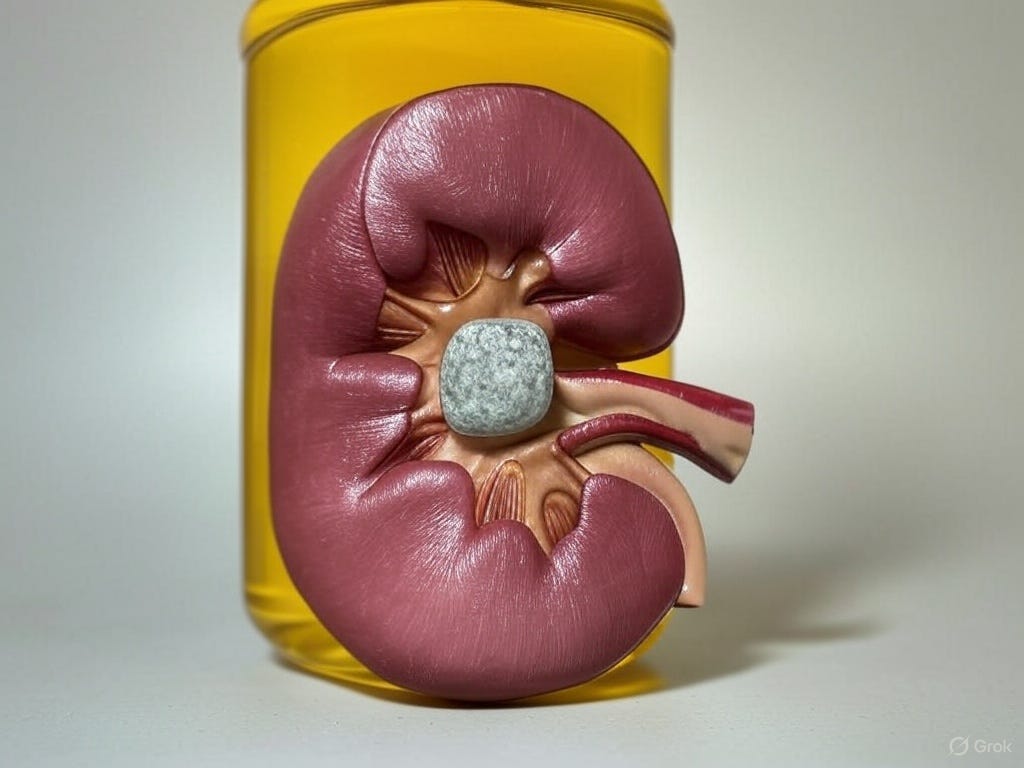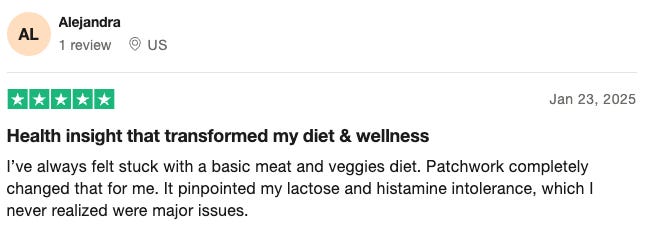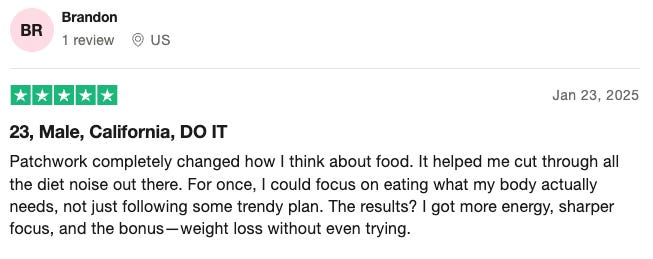Seed Oils Cause Kidney Stones
Whilst you're terrified of spinach, you should know: Over 90% of oxalate is produced internally
A quick excerpt from a coaching call:
Me: “So, all of this means that you probably have been pathologically not detoxing aldehydes properly your entire life. I'm surprised that you haven't had any kidney stones by this point, to be honest.”
Them: “Wait, say that again”
Me: “The primary cause of kidney stones is a stuff called oxalate. What people don't realize is that 90% of oxalates are actually produced inside of the human body. Fundamentally, they are produced via something called the glyoxal pathway, which comes from eating linoleic acid (seed oils). And from your genetics we can see that you will have had a seriously slowed detox of seed oils your whole life if you ate them.”
Them: “I’ve had 7 kidney stones, nephrologists could never understand why”
Me: “Yeah it’s the seed oils”
I remember this like it was yesterday - what seemed like an innocuous fact lit up our client face as she could unpick another mystery that medicine couldn’t help with in her body. I explain how it all works below, but here’s some reviews on Patchwork’s work so far.
How does this all work
Kidney stones are caused by circulating oxalates in the body
Over 90% of oxalate is produced internally, with linoleic acid oxidation via lipid peroxidation playing a major role by generating glyoxal, a precursor to oxalate, which contributes to kidney stone formation.
Oxidized LDL, derived from oxidized linoleic acid, leads to podocyte apoptosis and foam cell formation in the kidneys, resulting in glomerulosclerosis (scarring) and impaired renal function.
When taking into account the full body of literature and human biology, it is clear that dietary linoleic acid is the primary driver of kidney stones in humans
Involvement of Linoleic Acid in kidney stones
Emerging evidence suggests that the majority of oxalate in the body is produced endogenously, with over 90% of urinary oxalate being synthesized internally rather than obtained from dietary sources.
This insight shifts the focus of kidney stone prevention from external dietary oxalate intake to the internal metabolic processes that contribute to oxalate production, particularly in individuals without major gastrointestinal surgery that would otherwise increase dietary oxalate absorption.
Oxidized Polyunsaturated Fatty Acids (PUFAs) and Oxalate Production
Linoleic acid, a commonly consumed polyunsaturated fatty acid (PUFA), undergoes non-enzymatic lipid peroxidation, leading to the formation of various oxidation products, including glyoxal. Glyoxal is hypothesized to be a significant precursor of endogenous oxalate synthesis in humans.
The conversion of glyoxal into oxalate represents a key metabolic pathway, linking lipid peroxidation of PUFAs like linoleic acid to kidney stone formation.
Several detoxifying enzymes, such as aldehyde dehydrogenase (ALDH), play a role in managing glyoxal levels, but when oxidative stress is high and the balance of reactive oxygen species is disturbed, the body’s ability to detoxify glyoxal may be overwhelmed.
This can lead to an accumulation of oxalate, a critical factor in the formation of kidney stones.
Oxidized LDL and Renal Injury
Beyond oxalate production, oxidized low-density lipoprotein (oxLDL) plays a direct role in kidney damage. OxLDL is a modified form of LDL that arises when lipoproteins containing PUFAs like linoleic acid become oxidized.
Studies have shown that oxLDL, but not native LDL, induces apoptosis (programmed cell death) in kidney cells known as podocytes. These cells play an essential role in maintaining the filtration barrier in the kidneys.
Their damage leads to glomerulosclerosis, which is essentially the arteriosclerosis of the kidneys—a condition marked by scarring and stiffening of the glomerular structures.
Human glomerular mesangial cells (HMCs), which provide structural support in the kidney’s glomerulus, also take up oxLDL under inflammatory conditions.
In the presence of inflammatory cytokines like Interleukin-1β (IL-1β), these HMCs ingest oxLDL beyond their scavenging capacity, becoming foam cells.
Foam cell formation in HMCs contributes to glomerulosclerosis and renal injury, further impairing kidney function and potentially exacerbating oxalate accumulation due to reduced renal filtration efficiency.
The connection between linoleic acid oxidation, endogenous oxalate production, and renal damage is a critical but often overlooked factor in kidney stone formation and progression of renal disease.
While dietary management of oxalate intake has traditionally been emphasized, reducing the intake of linoleic acid, and controlling oxidative stress within the body is equally if not more important in mitigating the risk of kidney stones and protecting overall kidney health.
But I’m carnivore, this doesn’t apply to me
Unfortunately, it absolutely does.
Chicken, Duck, Turkey and Pork fat is essentially a seed oil.
Those pork rind covered chicken thighs you eat regularly will be full of Linoleic Acid.
In fact, that salad you are afraid of is less harmful than the pork rinds you eat.
Stick to beef & other ruminants if you want to save you kidneys.
Want help?
Struggling to navigate all the diet tribes, but just want to feel great again? We help people find the optimal diet to shed weight without calories counting based on your DNA - come check it out at Patchwork.
We promise there’s no cardio or calorie counting required.









Excellent article, I have worked in the urology field the past 4 years and always struggled to buy all in on reducing oxalates in the diet.
Many patients will tell me they don't eat foods high in oxalates but will still have persistent stone formation.
The next obstacle will be telling patients to reduce seed oils, then questioning me about saturated fat and heart disease. Obviously not being in the field of Cardiology they will be confused and left to resort back to their cardiologist who will vilify saturated fat. An endless cycle. Broken system, no one is going to save you except yourself.
Cheers